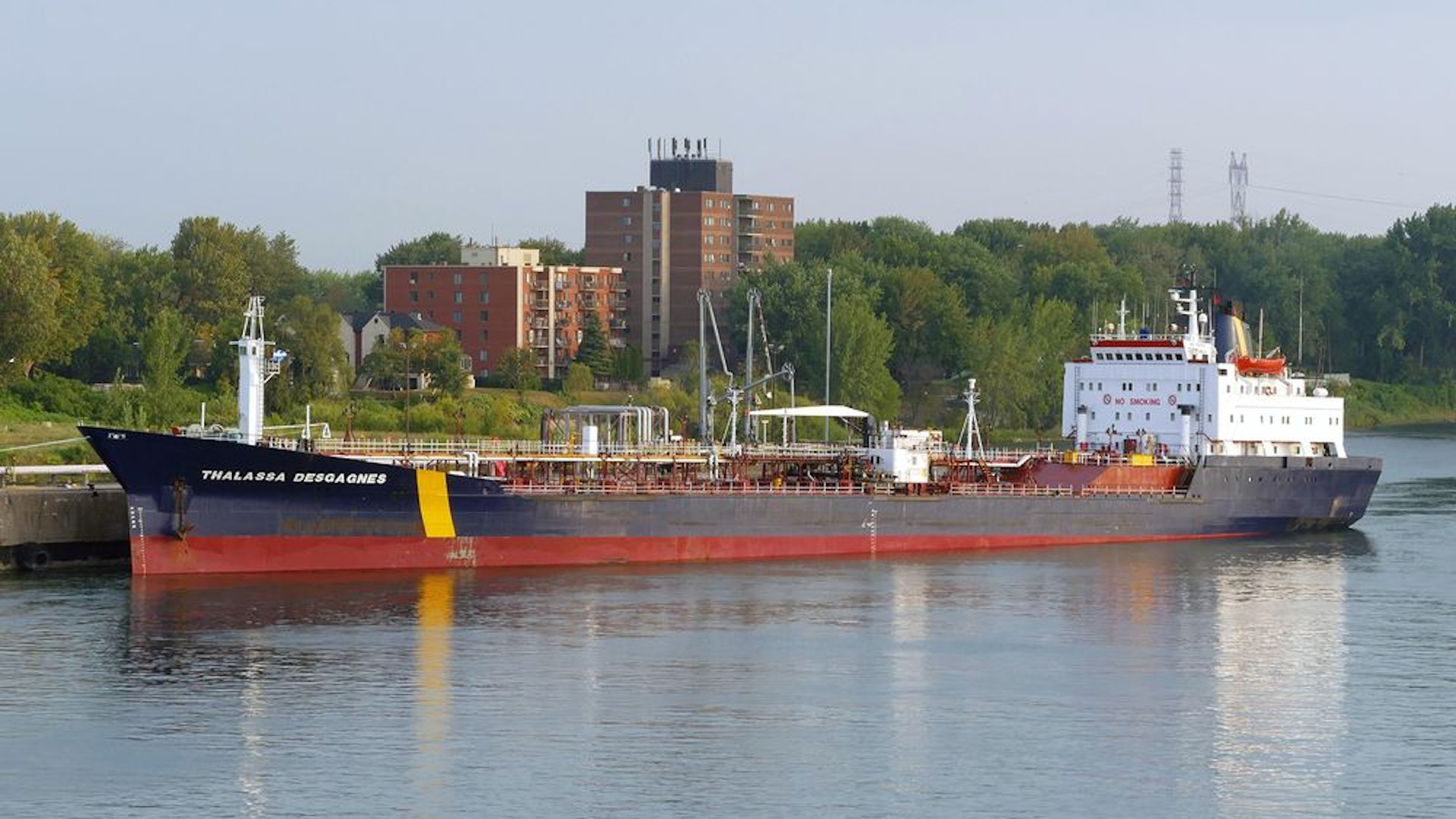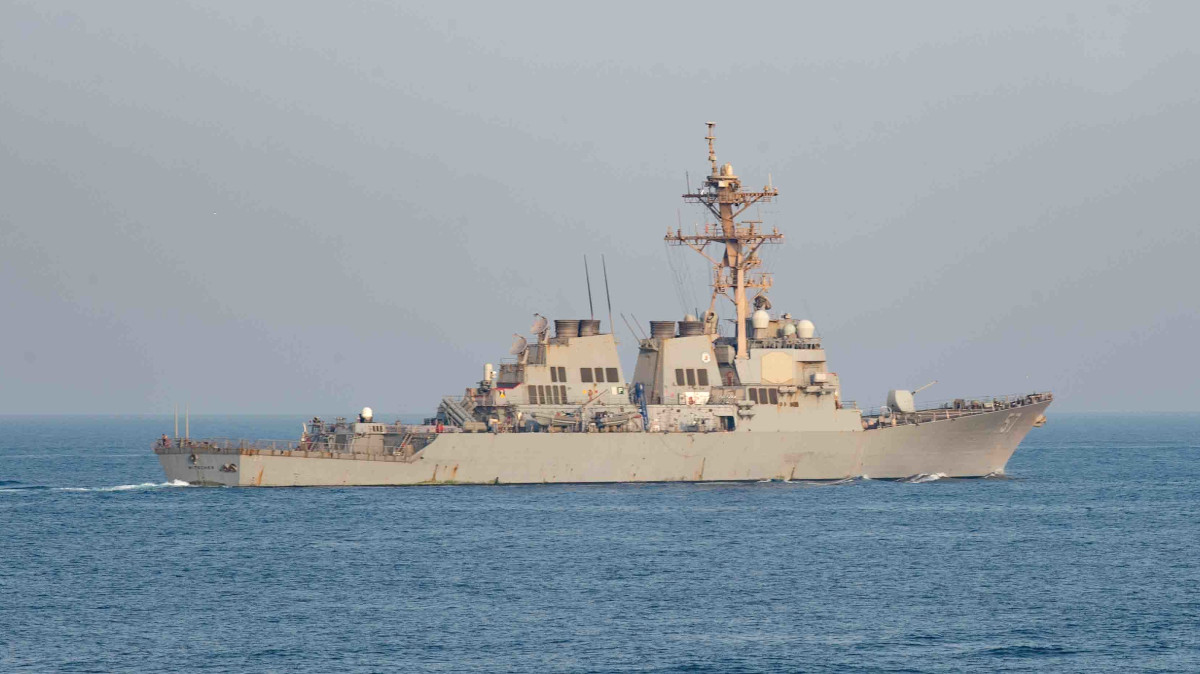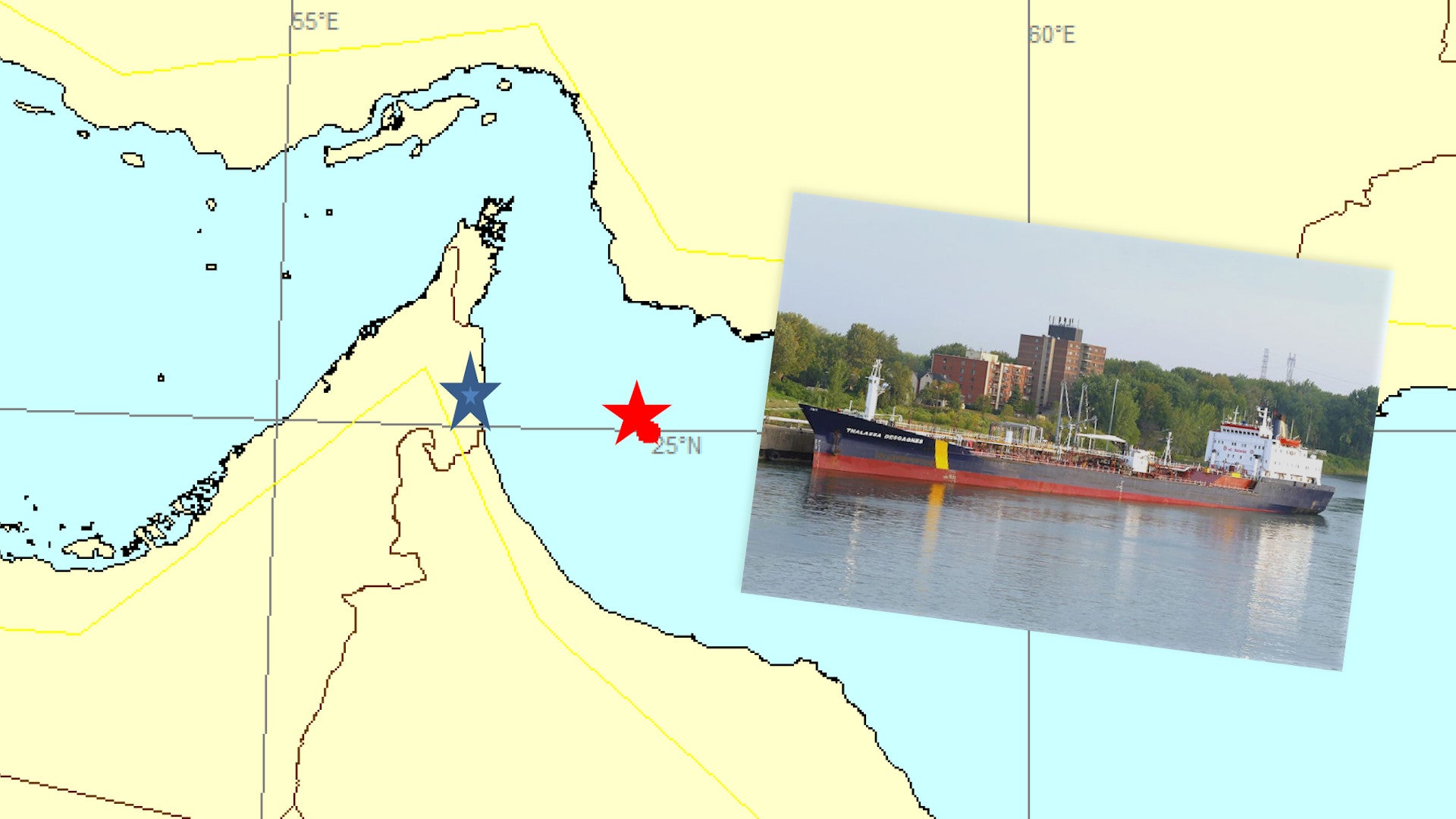British authorities say the curious apparent hijacking of the Panama-flagged asphalt/bitumen carrier M/V Asphalt Princess is over and that it and its crew are safe, after armed individuals that had boarded the vessel left. However, the identities of these boarders and their motives remain unclear. Some reports have indicated that they were directing the ship to Iran, which has a history of seizing foreign commercial vessels, and this comes after multiple countries also blamed the regime in Tehran for carrying out a fatal drone attack on a Liberia-flagged, Israeli-operated tanker Mercer Street last week.
The United Kingdom Maritime Trade Operations (UKMTO) organization, which is overseen by the U.K. Royal Navy, issued a notice on Aug. 4 stating that “Boarders have left the vessel. Vessel is safe. Incident complete.” At the time of writing, none of the statements from UKMTO, which first issued an alert about what it eventually categorized as a “Potential Hijack – Non Piracy” yesterday, have identified the ship involved in this incident. However, Oman’s Maritime Security Center did issue a formal statement regarding the situation yesterday that said that Asphalt Princess was the ship in question.

Details about the exact nature of the apparent hijacking, which occurred in the Gulf of Oman approximately 61 miles east of Fujairah in the United Arab Emirates and that you can read more about in our initial reporting here, remain murky. Various reports say that between eight and nine armed individuals boarded the Asphalt Princess and then instructed the crew to sail to Iran. Why those individuals subsequently left, as well as how they were able to do so, is unclear.
The U.S. military deployed unspecified forces to monitor the situation, according to the Financial Times newspaper in the United Kingdom, but there is no indication that they intervened directly. It’s is also unclear what types of assets, such as aircraft or ships, might have carried out this surveillance. In 2019, the United States did establish the International Maritime Security Construct (IMSC) in the region to help safeguard international shipping in the region. The U.S. Navy’s Nimitz class aircraft carrier USS Ronald Reagan, along with the Arleigh Burke class destroyer USS Mitscher, did notably help escort
Mercer Street as it headed to port after suffering the drone attack last week. Online flight tracking software had also shown an Omani Air Force C-295 maritime patrol plane orbiting the area during the incident involving the Asphalt Princess.

It’s not clear if, whatever the intention of the armed individuals that stormed the ship, that Asphalt Princess ever made any significant movement toward Iran. The vessel’s position and status, based on the signal from its Automatic Identification System (AIS) transponder, was not consistently visible on online ship-tracking websites. The ship appeared to be situated halfway between Iran, to the north, and Oman, to the south, last night, roughly where the incident was said to have occurred, the Financial Times also reported.
For their part, Iranian officials have strenuously denied any involvement whatsoever in this incident and even offered to help with the response yesterday. Still, the regime in Tehran does have a long history of boarding and seizing commercial vessels in the region, often as part of economic or diplomatic spats with other countries.
While authorities in Iran typically announce such operations, there are interesting parallels between this incident involving Asphalt Princess and Iran’s seizure of the Panama-flagged tanker Riah, ostensibly over gasoline smuggling, in 2019. Iran’s Islamic Revolutionary Guard Corps (IRGC) only announced it had taken control of that vessel four days after the fact. That also came two days after Iran’s Foreign Ministry had claimed that the tanker had broken down and that its crew had requested assistance, after which it was towed into the country’s waters for repairs.

Prime Tankers, LLC, based in the United Arab Emirates (UAE), was the operator of Riah at the time of its seizure and is also the current operator of the Asphalt Princess.
The attack on Mercer Street, which killed one British and one Romanian national, and that officials in multiple countries have now said Iran was responsible for, had prompted speculation about Iranian involvement in the Asphalt Princess incident from the very beginning. However, that attack last week very much appeared to be the latest in a string of tit-for-tat attacks between Israel and Iran on each others’ commercial and military vessels, a shadow war dating back to at least 2019. There are no indications that Asphalt Princess has any links to Israel.
The apparent hijacking of the Asphalt Princess also came on the same day as the inauguration of Iran’s new president, Ebrahim Raisi, a notable hardliner who has already taken strong stances against the United States on various issues. President Joe Biden’s administration has been seeking, indirectly, to negotiate with Iran about the U.S. government’s return to a controversial multi-national deal regarding Iran’s nuclear ambitions. Those talks had already stalled out before Raisi took office and Biden, among others, has warned that the current diplomatic window on the United States’ renewed participation in the Iran Deal may be closing.
The United States and the United Kingdom have both said that they are continuing to investigate the circumstances surrounding what happened to the Asphalt Princess, so more information may well emerge about this still curious incident.
Contact the author: joe@thedrive.com
